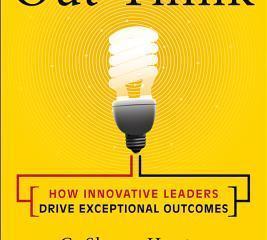
The world is changing, and so too are the ways consumers shop and evaluate the businesses with whom they patronize. One of the biggest changes is the value placed on corporate social responsibility and environmental stewardship.
Around 2008, a heightened awareness of the environment had developed a new breed of consumer that is growing exponentially. This new consumer is demanding that the products they buy be environmentally friendly and that the companies that produce the products be more concerned about their effect on the environment.
This heightened awareness has led to a huge movement whose goal is to “green” the world. New organizations are being established with new business models, and individuals are seeking new and greener products. Consumers are increasingly demanding that the brands they interact with are environmentally and socially responsible.
So who are the people that make up this sector of environmentally concerned?
One such group of people are LOHAS, an acronym that stands for “Lifestyles of Health and Sustainability.” LOHAS followers make up 17 percent of the market segment and are focused on health and fitness, the environment, personal development, sustainable living and social justice.
According to sociologist and author Paul H. Ray, the LOHAS marketplace serves a consumer movement he calls the “Cultural Creatives.” In research conducted by the Natural Marketing Institute, more than 63 million nationwide LOHAS consumers support businesses that share their commitment to natural living and the health of their families, communities and the environment.
Another influential group, called Naturalists, makes up an additional 17 percent of the market segment. This group focuses on health and organic goods but are not politically active in environmentalism.
A third group — representing a whopping 24 percent of the consumer pie — are called Drifters. This market segment has good intentions toward saving the environment, but various factors such as cost and convenience influence their behavior.
A fourth market segment is made up of Conventionals. Members of this group do not have “green attitudes” but do take mainstream actions, such as recycling and conserving energy.
And last, there are the Unconcerned. This group does not exhibit behavior that prioritizes the environment or society.
Though both LOHAS and Naturalists have a preference toward environmentally sustainable products, there is no substitute for quality and great customer service. Even if your product is environmentally sustainable but does not perform as well as less sustainable products, you may not be able to capture this target hard-line environmental market.
But if your product is better than your competitor’s and you have a better than average customer service reputation, chances are you already dominate the 42 percent of the U.S. consumer segment that fall into the categories of Conventionals and Unconcerned. You may also control the majority of the Drifters too. So it stands to reason that if your product outperforms your competitors and you can prove it to be more environmentally friendly without compromising the quality, then you have a good chance of capturing the LOHAS and Naturalites with very little extra effort.
There are four key motivators that drive interest in the environment:
The first is “Personal Protection” with the perception: “The environment is getting worse, and I need to protect myself and my family.” This is referred to as, In Me, On Me, and Around Me. That pertains to the increased use of organic foods and natural cosmetics, etc. Consumers are looking for natural alternatives to products that they use. A recent LOHAS survey identified that after automobiles, household cleaners constitute the category of highest environmental concern for most consumers.
A second motivation is cost. With the increase in energy costs, families are looking at any means that help them save money.
An easy and affordable way to save on electricity would be the use of new energy-efficient light bulbs. This product is simple to install, relatively inexpensive to buy and lowers energy bills. This consumer is looking for help to make small steps toward living greener but is not willing to sacrifice for efficiency, price, availability or brand. This consumer is not likely to go out and buy a new refrigerator or washer and dryer just to save energy. But when it comes time to replace nonworking appliances, they will probably look closely at cost vs. energy savings.
A third motivation is “status.” Again, the average majority is not likely to abandon their great running automobile for a fuel-efficient hybrid or all-electric vehicle. But with the trend toward environmental consciousness, there are those status-seeking individuals who have the disposable income that will buy the Tesla or Prius or have solar panels installed on their home as a show of status.
The fourth key motivation and perhaps the least influential is “Altruism.” These consumers make their decisions because they genuinely care about the environment and believe that it is “the right thing to do.”
If a product can be proven to be environmentally safe for use on or around the consumer’s family and cost the same as or less to use and not harm the planet, it stands to reason that even the most casual environmental consumer would choose that product over a competitor.
The number of companies that are becoming greener and more socially responsible is growing despite the worldwide economic turmoil, and indications are that this interest in becoming greener will continue to grow.
This transition is being driven by consumer demands, which in turn spurs corporate competition, which translates into the Triple Bottom Line concept for sustainability, addressing economic, environmental and social business effects — otherwise known as People – Planet – Profit.
By making environmentally conscientious changes in the way your business buys, sells and creates its products, with operating on a good core of environmental principals, you can attract a large segment of the consumer population that is looking for a way to make their spending dollars count.
Craig Ruark is the author of “Marketing Your Green Side: A Practical Guide to Greening and Marketing Your Business,” available at Amazon.com.






